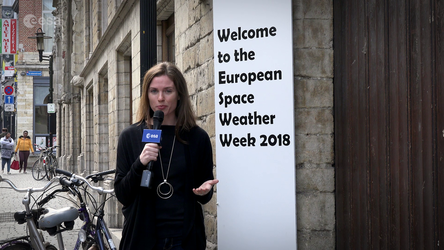

Magnetic waves power high-speed solar wind
Joint observations by the ESA-led Solar Orbiter mission and NASA’s Parker Solar Probe have demonstrated that fast solar wind is heated and accelerated away from the Sun by large deflections in the Sun’s magnetic field lines, known as magnetic switchbacks or Alfvén waves.
Although the two spacecraft are operating at different distances from the Sun, and in very different orbits, in February 2022, the spacecraft happened to align along the same stream of solar wind.
Fast solar wind is known to come from magnetic configurations known as coronal holes which channel the charged particles out into space. The holes are places where the Sun’s magnetic field does not turn back down into the Sun but stretches deep into the Solar System.
At the edge of the Sun’s corona, over a coronal hole, Parker detected solar wind with moderate speeds and high temperatures, along with Alfvén waves with lots of energy.
Flying beyond the orbit of Venus, Solar Orbiter measured the same wind two days later. By this point the Alfvén waves had almost disappeared, while the wind had sped up significantly. Although the wind temperature at Solar Orbiter is lower, it is hotter than it would be if the gas had freely expanded.
Comparing the numbers, the research team concluded that the lost magnetic energy was powering the acceleration and slowing down the cooling of the solar wind by providing some heating of its own.
This answers the decades-long question of where the energy comes from to heat and accelerate the fastest parts of the solar wind.





